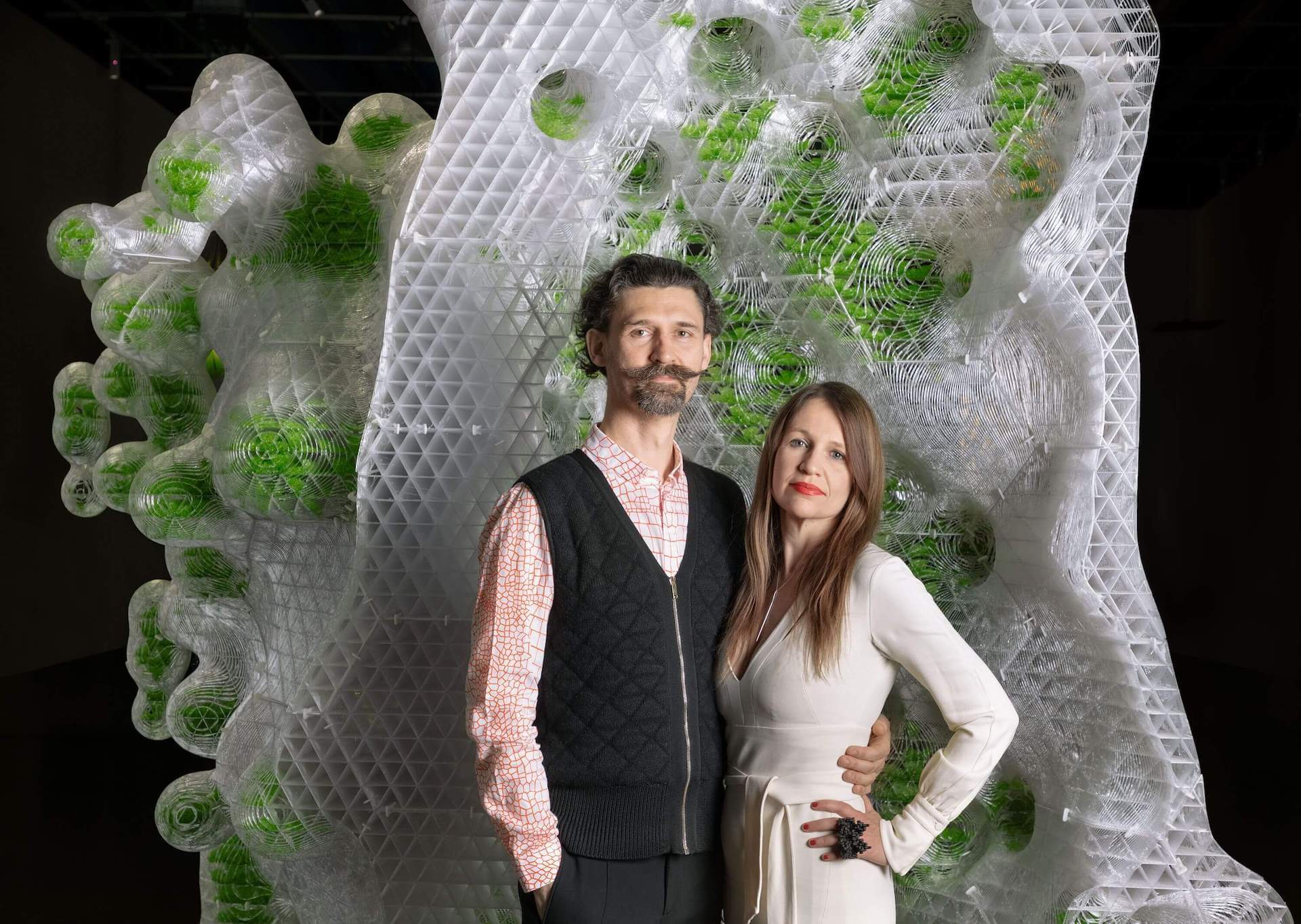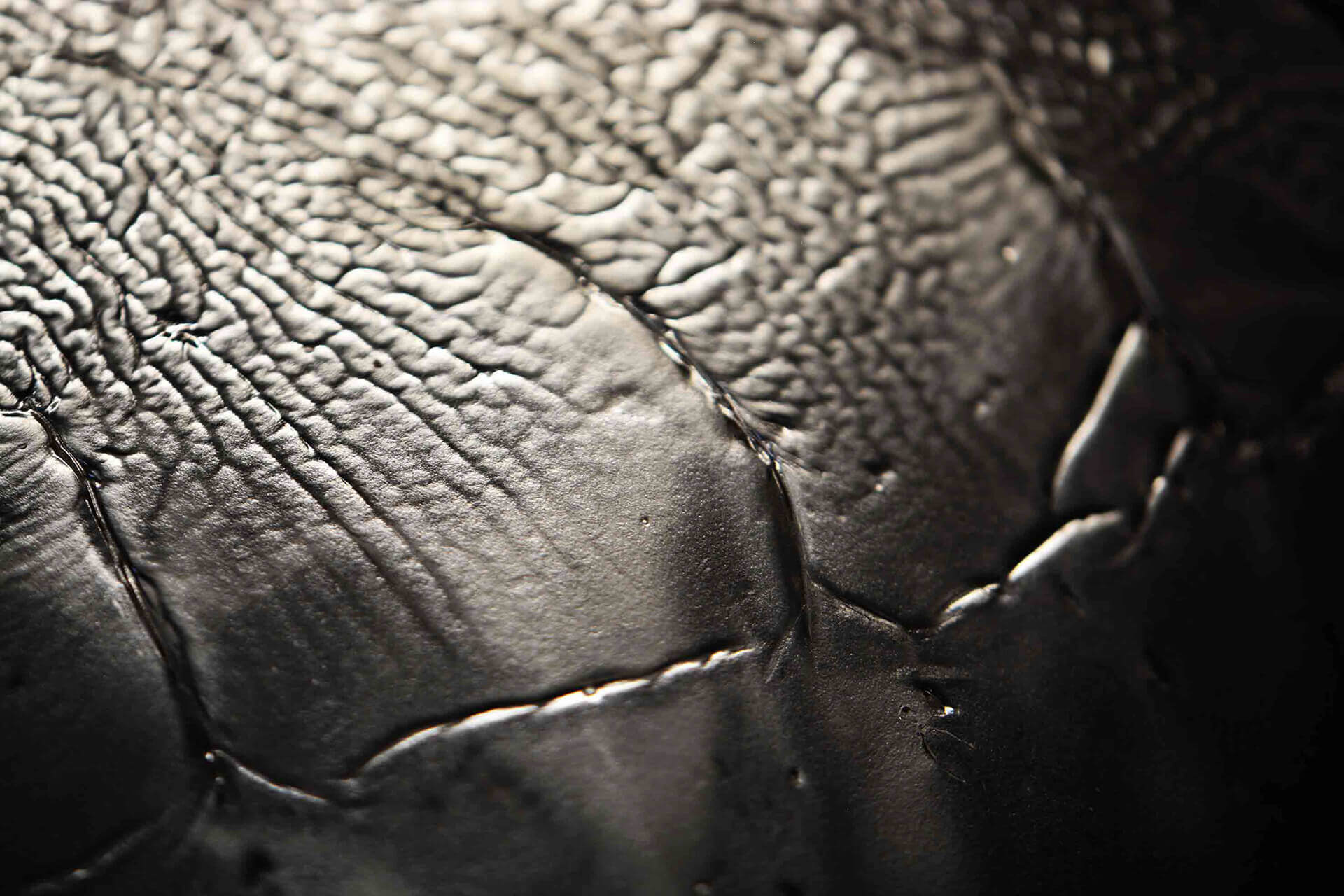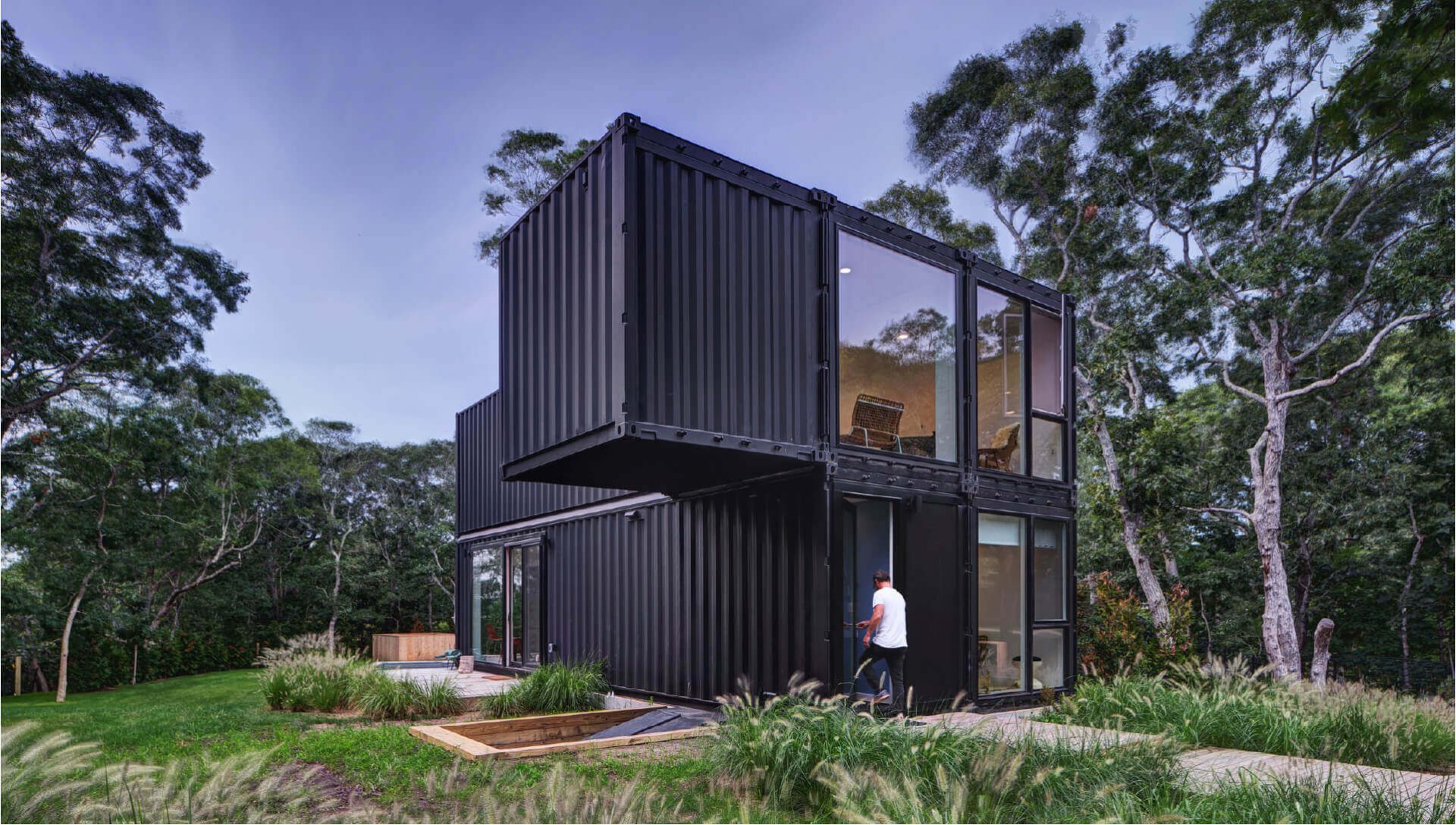Reassessing the dark side of urban ecology with bio-digital architectures by ecoLogic Studio

London-based practice, ecoLogic Studio has established an international reputation as an innovative practice that fuses digital technologies with environmental design.
As time progresses, we become more and more aware of the need to address our global ecological crisis, not only through our way of living but also through the powerful tools for change that are design and architecture. With that in mind, creatives are rethinking the relationship between humans and the environment, looking at technology as a compelling medium and integrating different fields, such as biology, to create truly innovative outputs that respect our surroundings. Among these sets of passionate creatives, we find ecoLogic Studio, the architectural and urban design practice that specializes in environmental design, urban self-sufficiency, and building integrated nature.
Multidisciplinary, experimental, innovative and, at times, almost idealistic, this London-based practice, founded by Italian architects Claudia Pasquero and Marco Poletto, has a unique design approach that reevaluates the relationship with our environment and envisions a world in which all ‘beings’ could be in harmony with each other through a found balance. ecoLogic Studio’s dedication to bio-digital design as a new “ecology” of space and behavior enables them to create architectural spaces and materials that serve human needs while respecting a larger ecological whole. Their work does not see ecology as just another simple task to check but rather it is created with an “ecology of mind” that enables them to develop system interactions, use the underlying logic in natural processes and establish an innovative type of dynamic equilibrium between users and their surroundings through design.
Astonished by their work, DesignWanted interviewed founder Claudia Pasquero, and found out more about their bio-design approach, their “systemic” design, and what are the next steps for ecoLogic Studio.

Who are Claudia Pasquero and Marco Poletto? How did the journey to bio-digital design begin?
Claudia Pasquero and Marco Poletto: “From an interest in biology, computation, and design. As well as on the application of both scientific and artistic methods. Marco and I have a multidisciplinary background (education) which includes drama, alpine sports, engineering, and architecture. We both studied engineering at Turin Polytechnic, before we both attended London’s Architectural Association, later teaching there and at the Bartlett School of Architecture.
We don’t like labels as they tend to be reductionist in terms of how they box in disciplinary boundaries. We’re happy to take on different titles depending on the particular environment. However, if we want to reimagine the way technology and nature come together, we need to re-describe these paths.”

Why ecoLogic Studio, why focusing on the definition of a new “ecology” of space and behavior?
Claudia Pasquero and Marco Poletto: “For us contemporary design is Polycephalum, it’s plural, collective and mutant.
In times of Climate Change no ecosystem is unaffected by human actions, but which kind of change? Aren’t change, transformation and adaptation inherent qualities of the planet we inhabit?
Our technological evolution, in the form of synthetic biology as well as artificial intelligence is opening scenarios where traditional dichotomies such as natural and artificial, material and digital, human and non-human, become superseded.“

Claudia Pasquero and Marco Poletto: “The machines that allow us to compute the changes in the global climate are the ones that contribute to cause it, and that, at the same time, open a space for new visual languages as well as narratives to emerge. If, for example, we look at cities from a satellite view, we realize that it is quite difficult to depict what is natural from what is artificial; from this perspective global cities, despite being large artificial system often depicted as the antithesis of nature, develop patterns that seems to recall natural formation of a radically different kind, they are complex synthetic organisms.
This view is in contrast with the model of the city that we inherited from modernity where zones are clearly defined and morphologically demarcated. In this context, areas of production or treatment of waste have traditionally been located, by plan, further out of the city centres, technically preventing possible contamination of the living quarter, but also removing the by-product of urbanization from our sight and from our consciousness at a very fundamental level.
Today we have a sanitized vision of the world whereas bacteria and micro-organism are commonly considered dangerous; we talk about re-greening cities and re-naturalizing forest as if such process could lead to the re-equilibrium of a temporary perturbed biosphere but most of natural as well as artificial systems are non-linear and composed of billions of interlocking feedback loops.”
Curious to know more about disruptive architecture research? Don’t miss An inquiry on Research and Business in Architecture

Claudia Pasquero and Marco Poletto: “Destruction, death, decay, digestion, dissolutions are some of the most fundamental processes of nature and critical part of its circularity; these processes often take part in the dark, they generate strange odors. They trigger in us atavistic fears of contagion.
They constitute the dark side of ecology, that we have all but erased from our consciousness and that is crucial to the functioning of ecosystems. But micro-organism has exceptional properties that we keep discovering in labs and make them capable of turning what we consider pollution or waste into nutrient and raw material; they are the missing link to redefine urban metabolism.
In this vision fungi, bacteria, spiders, machines and all other forms of intelligence become alongside human beings, bio-citizens, contributing to a sophisticated form of collective intelligence supporting the growth of a morphogenetic city.
This is key to the work of the Urban Morphogenesis Lab which in the past academic year has completed numerous projects both in the context of teaching based research then of practice-based research, projects include a computation master plan for the city of Tallinn, an exhibition at the Center Pompidou in Paris, a biological façade system called PhotoSynthEtica upon others.”

What fields provide the greatest inspiration for your experimental practice?
Claudia Pasquero and Marco Poletto: “Our work and research is mainly inspired by philosophical and scientific references. One of the main influences is Cybernetician and Anthropologist Gregory Bateson, while in recent times the discussion about dark ecology, aesthetics, and nature by Slavoj Zizek and Timothy Morton has been very much influential in our way of working.”

You constantly update and experiment with drawing and prototyping techniques to represent vital flows of matter, information and energy that fuel living ecology and that often elude architectural representation. What would you say is one aspect of your job that is difficult and little known, but definitely crucial to your practice?
Claudia Pasquero and Marco Poletto: “Transcalarity.
Visualisation is key to opening people’s minds about how future utopian bio-cities might function. To this end the Photo.Synth.Etica ‘biocurtain’, essentially a semi-transparent green living lung full of bacteria that can be draped over the facades of buildings, is a brilliant showcase. Capable of capturing up to 20 trees worth of carbon dioxide per day, it’s photosynthesis on a grand, performative scale. Unclean urban air enters at the curtain’s base and rises to meet the algae contained within, which removes the pollution, sequestering the carbon dioxide and releasing oxygen. What’s more, by night it glows with the luminescence of the microalgae. The curtain has already been used, most memorably, on Dublin’s Printworks Building in 2018.
Our work is about proposing new elements that can grow a new type of landscape that people can interact with and enter into one-to-one contact with processes, so that there could be more self-organisation across the planet about the resources that we use.”

With the Regional Algae Farm project, you consider multi-scalarity in this new systemic comprehension of architecture and the city. Could you explain to us how it works and the role it could play on a larger scale?
Claudia Pasquero and Marco Poletto: “Bio-digital research units, gardening centres, wildlife observation terraces, self-sufficient dwelling and a potentially infinite variety of other programmatic combinations will be supported by the continuous catalytic action of the tower that will constantly re-metabolize anthropic pollution as well as biotic contamination into local circular economies of raw materials, data and energy.
In order to promote the evolution of this concept the authors have recently launched the PhotoSynthetica Venture, a transdisciplinary design-innovation project. The first PhotoSynthetica demonstrator was unveiled in November 2018 in Dublin, Ireland. 32 meters long and 7 meters high, it took the form of an “urban curtain” and was commissioned by the Climate-KIC, EU’s most prominent climate innovation initiative.”

Claudia Pasquero and Marco Poletto: “The photosynthetic building membrane captured CO2 from the atmosphere and stored it in real-time at a rate of approximately one kilo of CO2 per day, equivalent to that of 20 large trees. The innovative building technology achieves this through the integration of three layers of functionality:
• Wetware: the selection and management of the living microalgae cultures.
• Software: the digital management system. It uses sensors to optimize performance in real-time. It also provides long-term projections and predictions of the system’s carbon capturing and air cleaning abilities.
• Hardware: the artificial habitat for cultivation of living cultures, or photo-bioreactor. The project combines digital design and fabrication technologies to optimize aesthetic qualities, environmental performances and architectural integration. PhotoSynthetica hopes to actualize significant economic, social, environmental and health benefits once it will scale up. The project embodies the multi-generational long-term benefits of adopting a carbon absorbing technology now, as it is 10 times more efficient at carbon sequestration than any other nature based green technology.”

What are the main trends & future directions within environmental design, urban self-sufficiency and building integrated nature?
Claudia Pasquero and Marco Poletto: “It is timely in the Anthropocene, and even more so in the Age of a global pandemic, to search for a non-anthropocentric mode of reasoning, and consequently also of designing. The Photosynthetica Consortium, established in 2018 and including London-based design innovation practice ecoLogicStudio, the Urban Morphogenesis Lab (Bartlett School of Architecture, University College London (UCL)) and the Synthetic Landscape Lab (University of Innsbruck, Austria), has therefore been pursuing architecture as a research-based practice, exploring the interdependence of human and biological intelligence in design by working directly with non-human living organisms.
The current rush of many cities to develop blue-green plans dealing with future threats of climate change is a testament to the obsession of searching for ‘true’ answers within a problem-solving framework. The experience in practice illustrated in this article highlights the urgent need for a new design method capable of engaging the systemic nature of urban landscapes and their architecture.”

Claudia Pasquero and Marco Poletto: “Architects and planners often rely on a ‘sanitised’ and therefore highly aestheticized vision of the world’s ecosystems exemplified by the very notion of blue-green planning and its focus on re-greening cities. This notion may be one of the most enduring aspects we have inherited from modernity.
And if bacteriological control was at the origin of its sanitation efforts, modern architecture and urban design turned it into a style; in other words, modernity did embed sanitation into an aesthetic value system. The contemporary paradigms of green cities and smart cities are the direct consequence of the evolution of that value system.
However, urban systems today are non-linear and composed of billions of interlocking feedback loops forming what the authors call the Urbansphere. Waste production, pollution emission, contamination, decay and dissolution are some of the most intense processes within the Urbansphere and a critical part of its contemporary metabolism; these processes often constitute the dark side of urban ecology, a side that is often invisible to the human eye, that is confined to restricted zones of our cities or exported to poorer regions of the world. And, most significantly, it is erased from the consciousness of most urban dwellers at least in the developed world.”

Claudia Pasquero and Marco Poletto: “Reassessing the dark side of urban ecology implies bringing to focus a new aesthetic of nature and, as a consequence, of the urban landscape. This new aesthetic of nature projects the design practice into the realm of micro-organisms such as viruses, bacteria, and fungi. These creatures induce fear because their tactics often elude our comprehension; however, their intelligence endowed them with exceptional properties. For example, they are capable of turning what we consider waste and pollution into nutrients and raw material.
From this perspective, ecoLogicStudio’s bio-digital architectures promote a new urban aesthetic centred on a novel appreciation for the micro-scale of bacteria as well as other forms of non-human intelligence. Within ecoLogicStudio’s body of work, the cultivation of these organisms becomes an act of ‘culturalisation’, thus entering the realm of architecture.
A notable example is ecoLogicStudio’s ‘H.O.R.T.U.S.’ series, begun in 2012 and currently ongoing. H.O.R.T.U.S., the Latin term for garden, here works as an acronym for Hydro Organism Responsive To Urban Stimuli. It refers to a series of photosynthetic sculptures and urban structures that create artificial habitats for cyanobacteria integrated in the built environment. Within H.O.R.T.U.S., cyanobacteria are deployed not only as photosynthetic machines but also to absorb emissions from building systems. They constitute a new active layer part of both urban and natural metabolic cycles, thus reconnecting the so-called green and dark sides of urban ecology. It is a new kind of architectural symbiosis.”

Claudia Pasquero and Marco Poletto: “This symbiotic relationship has been explored in a recent project unveiled in Tokyo in November 2019, at the Mori Art Museum.
Suspended at the 53rd floor of the Mori Tower and with the backdrop of Tokyo’s urban sprawl the sculpture materializes its urban dimension as a new prototype of living architecture, the PhotoSynthetica Tower. Explored through a series of associated speculative images the projects unfolds the architectural implications of H.O.R.T.U.S. as the embodiment of Tokyo’s evolution into a future powerhouse of bio-digital culture and technology.
At the city scale it appears as a complex synthetic organism in which bacteria, autonomous farming machines and other forms of animal intelligence become, alongside humans, bio-citizens thus contributing to the formation and transformation of Tokyo’s own synthetic urban landscape.”

Claudia Pasquero and Marco Poletto: “The biomass that grows in all the active areas of the tower is made available to the occupants of the building itself, suppling a plethora of emerging activities and industries that will define the programmatic mix of the building itself and its occupational patters, both in the case of human and non-human inhabitants.
The pandemic that is currently engulfing the world is a direct manifestation of the unbalance within the Urbansphere. While chronic exposure to air pollution affects our lungs and weakens our immune system, unsustainable food supply chains and practices are and will keep vectoring more and more pathogens within our bodies.
This scenario calls for a broader systemic approach to urban development as well as for long-termism in its design approach. Our design practice seeks to enable both. Cyanobacteria from this perspective emerge from the urban microbiome to become a powerful design medium.”

In a recent work with brand name Photo.Synthetica, you have developed a curtain project for post-pandemic adaptation. What is the next step for EcoLogic Studio?
Claudia Pasquero and Marco Poletto: “In a recent collaboration with UNDP, we have been testing the potential of Artificial Intelligence to develop Deep Green, a new green planning interface, and we are partnering up with the pharmaceutical industry for the development of urban health projects to improve polluted public realms.
We were due to participate in Milan’s annual design festival courtesy of fashion brand COS, which sponsors a headline-grabbing, immersive installation every year. Continuing the photosynthesis theme, ecoLogicStudio’s proposal was based around Leonardo da Vinci’s studies on water turbulence for the city’s canal system.
We are working on our new website and a new book which will be launched in the next months, while during the lock-down we have launched the BioBombola project which enables the cultivation and harvest of fresh Spirulina at home, contributing to re-design some of the logic that led us to the current health crisis. If we, collectively, transform air pollutants into highly nutritious aliments there will be fewer opportunities for viruses to exploit unsustainable food supply chains and for polluted atmospheres to reach and attach to us.”
If you want to know more about how designers are rethinking architecture, don’t miss Kristoffer Tejlgaard’s interview






